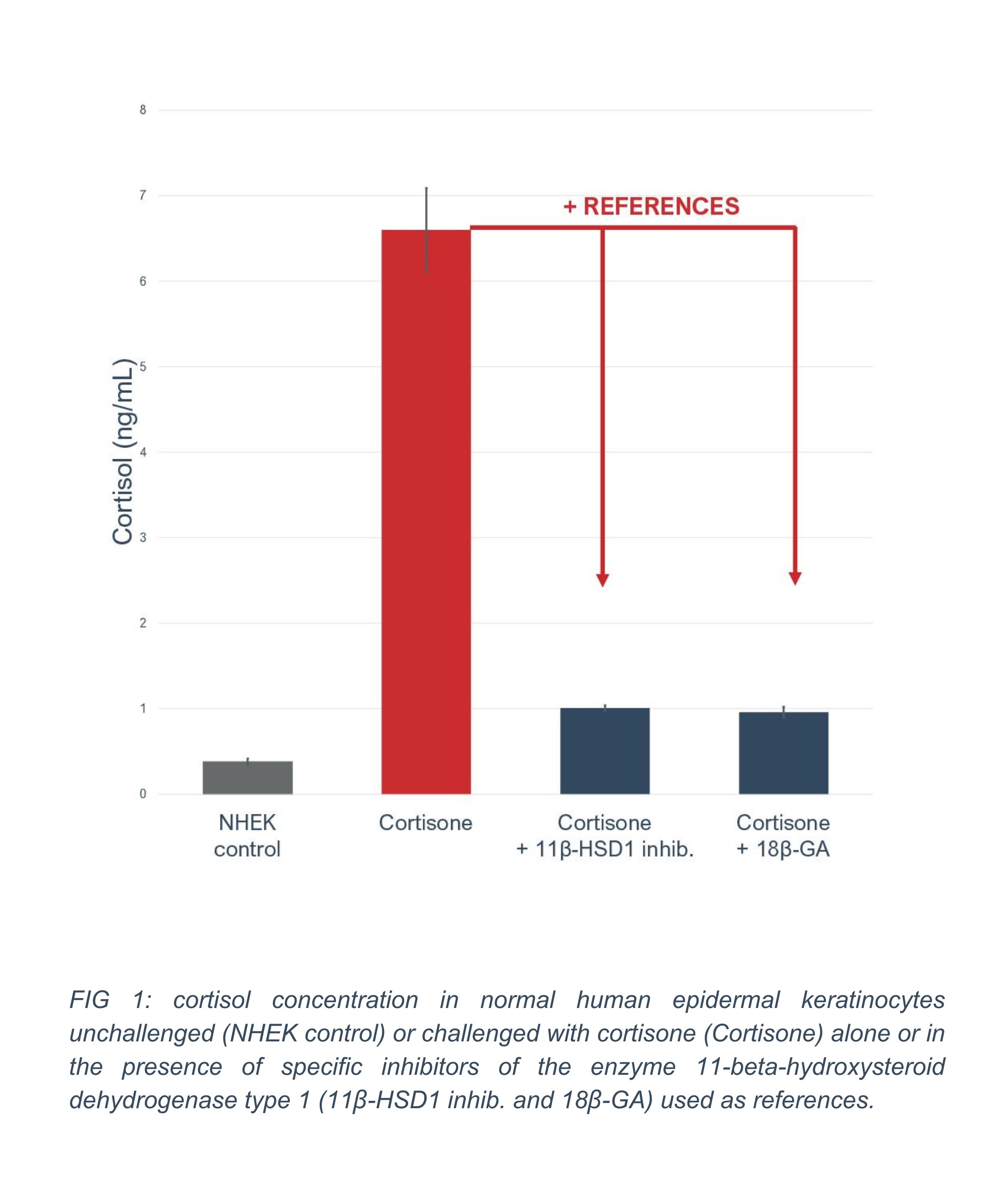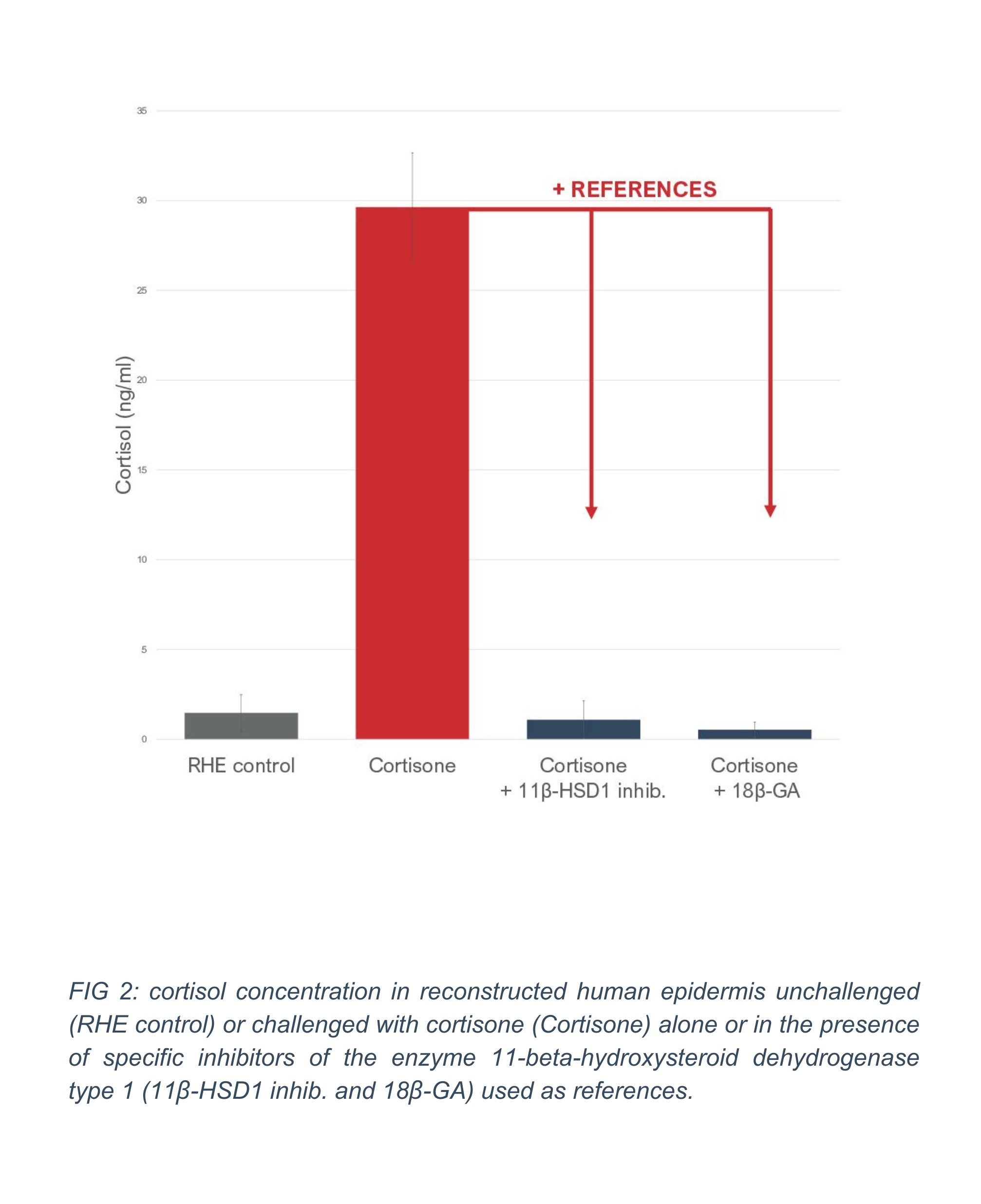Measuring cortisol-related endogenous stress with StratiCELL
29 July 2024
Our skin reflects our emotions. During high emotional stress, our body uses cortisol as a warning messenger. In our skin, cortisone is converted in cortisol by the enzyme 11-beta-hydroxysteroid dehydrogenase type 1 (11β-HSD1). Despite its natural occurrence, high concentration of cortisol in the skin impairs wound healing processes, decreases collagen production and increases inflammation.
Assessing the effectiveness of a dermo-cosmetic product in reducing cortisol by inhibiting the 11β‑HSD1 enzyme would demonstrate its positive effect on stress reduction and thus contribute to a better appearance and health of the skin. Glycyrretinic acid (GA) extract from licorice is known for its inhibitory effect on the 11β‑HSD1 enzyme.
In vitro, cultured normal human epidermal keratinocyte (NHEK) have been described to express 11β‑HSD1. In order to evaluate the influence of demo-cosmetic compounds on balancing the cortisone conversion to cortisol, StratiCELL has validated the quantification of cortisol released by NHEK in monolayer culture.
Quantification of cortisol by ELISA allows to demonstrate that NHEK cells release high level of cortisol after cortisone treatment through 11β‑HSD1 conversion as demonstrated by the use of a specific 11β‑HSD1 enzyme inhibitor. Likewise, a solution of GA could also reduce the level of converted cortisol, confirming its efficacy as an 11β‑HSD1 antagonist reference in this system.

In order to progress one step further, StratiCELL aimed at defining the response of keratinocytes in a 3D reconstructed epidermis (RHE) model. Interestingly, RHE challenged with cortisone released high level of cortisol. Similar to observation in 2D cells, cortisone conversion was reduced in the presence of both 11β‑HSD1 enzyme inhibitors. This assay confirms the dehydrogenase activity of the 11β‑HSD1 enzyme expressed in cortisone-challenged RHE, and the use of GA as a benchmark molecule reducing the local conversion of cortisone to cortisol.

In conclusion, this assay demonstrates the possibility to evaluate in vitro the impact of new active ingredients on cortisol released by cultured NHEK as well as 3D reconstructed epidermis. Additional gene expression analysis aiming at deciphering the involved cellular pathways will allow StratiCELL to offer a complete panel of efficacy testing solutions to speed up claim substantiation of innovative dermo-cosmetic actives targeting emotional stress, well-being and well-ageing.
To know more about StratiCELL ‘s services, visit us on www.straticell.com, or contact directly our experts at info@straticell.com.
CONTACT
Christel Boudry – Business Developer








 Follow us on Linkedin!
Follow us on Linkedin!
You must be logged in to post a comment.